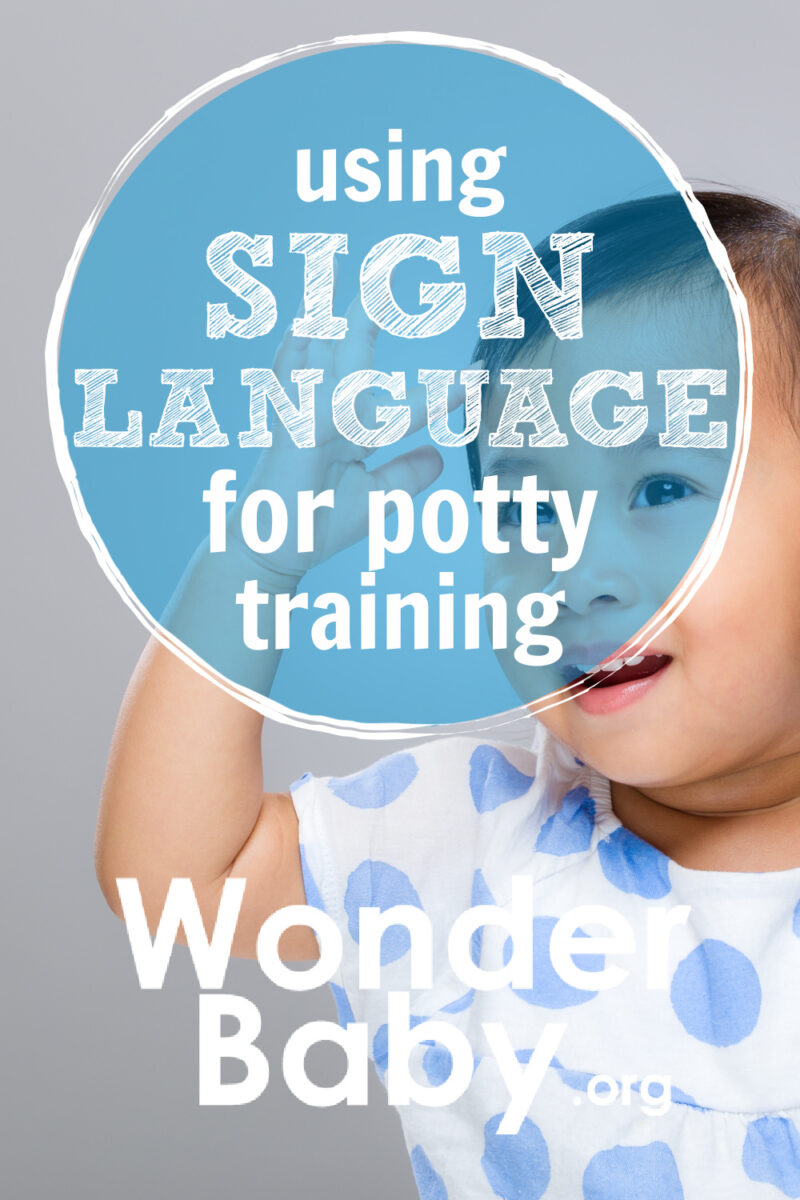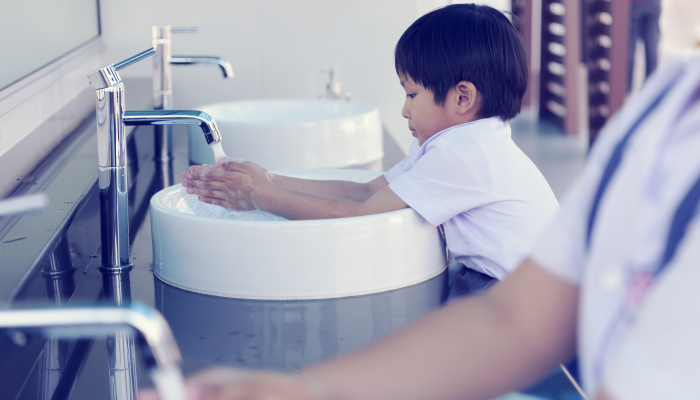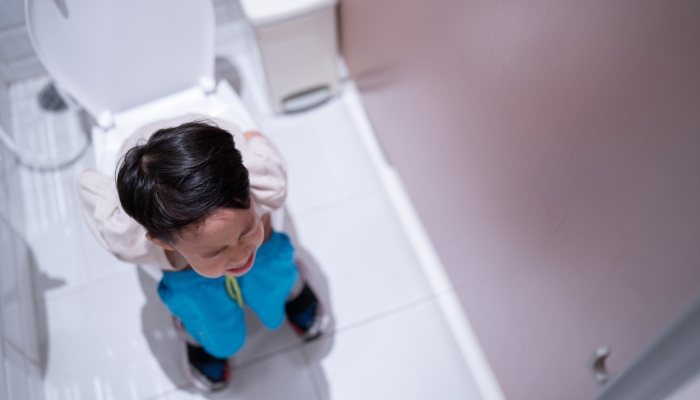How to Use Sign Language for Potty Training

- Communicating through sign language can make potty training a simple and fast process for you and your child.
- Sign language for potty training is easy and fun for your child to learn.
- There are a variety of signs to choose from, or you can make up your own.
Sign language can be a useful tool to have in your potty training toolbox. It can be particularly helpful for potty training very young children who are pre-verbal, children with special needs, or for multilingual families. Sign language for potty training is simple to learn, easy to use, and can take the stress out of helping your child reach potty success.
There are many well-known signs for “potty,” “pee,” “poop,” and “dirty diaper” in established sign languages. But you and your child may naturally come up with your own signs that work just as well. As long as you use them consistently, signs can help your child communicate their need to use the potty. Once you figure out what works for you, you’ll soon be diaper-free!
Why Use Sign Language When Potty Training Your Toddler
Teaching your child to use baby signing can help them begin potty training early—before they even start speaking. Babies as young as 12 to 18 months can start to potty train. And they can learn to tell their parents they need to use the potty by signing. Some parents find that potty training at this age can be easier and less frustrating than with older toddlers.
Using sign language can also be very helpful for potty training your special needs child. Sign language reduces frustration by giving children a simple way to communicate their need to use the toilet. It can also be useful in multilingual households by providing one common way of referring to the potty or the bathroom.
Sign language can be effective when used along with other potty training methods. It allows your child to engage in the potty training process by communicating with you. Children who are engaged and communicating about the potty are less likely to be resistant and stubborn about potty training.
How Do You Say “Potty” Using Sign Language?
“Potty” in American Sign Language (ASL)
The sign for “potty” in ASL is easy for little fingers to master. First, make a fist and insert your thumb between your index and middle finger. Then shake your fist to sign “potty.”
“Potty” in British Sign Language (BSL)
To sign “potty” in BSL, make a fist with one hand and draw a circle in the air with your other hand.
“Potty” in Makaton
In Makaton, the sign for potty combines the sign for “toilet” with the sign for “bowl.” Use two hands to make a bowl shape, and then brush the tip of your middle finger on your chest to make the sign.
How Do You Say “Poop” Using Sign Language?
“Poop” in ASL
To make the sign for “poop” in ASL, make a fist with one hand, insert the thumb of your other hand into the bottom of your fist, and pull downward.
“Poop” in BSL
In BSL, the sign for “poop” is easy for little ones to understand and to use. Just brush a flat hand across your mouth.
Watch how to sign ‘poo’ in British Sign Language
How Do You Say “Pee” Using Sign Language?
“Pee” in ASL
First, make the sign for the letter “P.” This is a downward “V” shape made by your index and middle fingers with your thumb in between them. Then tap your nose to make the sign for “pee.”
“Pee” in BSL
To make this sign in BSL, tap your thumb and index finger together while making a downward motion, resembling a spray.
Watch how to sign ‘wee’ in British Sign Language
How Do You Say “Dirty Diaper” Using Sign Language?
“Dirty Diaper” in ASL
The sign for “change” in ASL can be used to signal that your child has a dirty diaper.
“Dirty Diaper” in BSL
There are several signs in BSL which you can use to refer to a dirty diaper including the signs for “dirty,” “clean,” “change,” and “diaper.” (Diapers are referred to as nappies in the video below.)
“Dirty Diaper” in Makaton
Using the signs for “change” and “diaper,” your child can communicate using these simple Makaton signs.
How to Use Sign Language When Potty Training Your Toddler
The key to using baby sign language when you potty train is consistency. Begin by using the sign for “potty” every time you change your baby’s diaper. When you use the sign, also say the word aloud so that your child makes the association between the sign, the contents of their diaper, and the word. Encourage your child to make the sign back to you.
Use the sign every time you enter a bathroom together to reinforce the meaning. When your child is ready to potty train, use the signs throughout the process. You can use sign language along with any other potty training method to help your child understand how and when to use the toilet.
As you potty train, your child will be able to sign to you when they feel that it’s potty time. Communicating like this can take a lot of the guesswork and frustration out of potty training.
It’s Okay to Make Up Your Own Signs
When our son was a baby he would tap the front of his diaper near the hip if he wanted to be changed. It wasn’t “official” sign language but we knew what he meant and it worked!
According to potty training expert Jenn Philpott, founder of the Born Ready website and mother of four, any sign you choose can work. It just has to be a sign that you and your child both understand and that you use consistently. Check out Jenn’s helpful explanation in the video below.

Related Posts

Communication, Health & Nutrition
Recurrent Ear Infections and Their Impact on Speech/Language Development
Learn more about the relationship between recurrent ear infections and their potential effect on speech and language development.

IEPs, Potty Training
7 Sample Toileting IEP Goals
Toileting IEP goals should address the specific needs and abilities of each child. Be flexible and patient as your child works on their toileting skills.

Potty Training
How To Deal With Constipation When Potty Training
Constipation is common amongst children of potty training age. Many children suffer from potty training constipation, but there are things you can do to help.